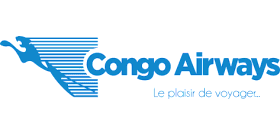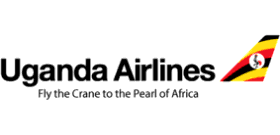Congo Airways Soars Back: New Embraer E190 Fleet to Disrupt African Skies

Congo Airways, after a significant operational halt in April, is strategically preparing for its return, a development closely watched by aviation professionals across sub-Saharan Africa. Central to this comeback is the acquisition of an Embraer E190, an 18-year-old aircraft previously operated by SKYhigh Dominicana. This E190, currently undergoing a comprehensive maintenance overhaul in Toulouse, was procured under the guidance of CNSS, Congo Airways’ majority shareholder, with facilitation from the Canadian firm Xinatis. Industry sources suggest this initial acquisition may be part of a broader plan to expand the fleet to as many as three Embraer E190s, signaling an ambitious intent to regain market share and restore national pride in the Democratic Republic of Congo's aviation sector.
The choice of the Embraer E190 is particularly strategic, given its reputation for efficiency on medium-haul routes and relatively low operating costs. This proven workhorse offers airlines flexibility and reliability in challenging markets, making it a practical solution for Congo Airways to connect key cities within the DRC and across the wider Central African region. It promises to provide much-needed frequency and capacity in areas with robust demand, despite fierce competition.
However, the airline's path to a sustainable revival is fraught with challenges. Over the last five years, Congo Airways has experienced significant instability, marked by a cycle through five different chief executives. This leadership churn, coupled with persistent financial pressures, has raised questions about the company's long-term solvency. Further complicating its re-entry into the market is the emergence of Air Congo, a new formidable competitor that has rapidly established a presence on crucial domestic and regional routes, intensifying the battle for passengers, market share, and commercial partnerships.
For African aviation strategists, Congo Airways’ latest actions provide important insights into the future of state-backed carriers in the region. The pragmatic decision to acquire a used, yet well-supported, aircraft like the E190 addresses both capital constraints and operational realities. Unlike widebody aircraft requiring high load factors and complex maintenance, the E190 offers flexible deployment for short and medium-haul missions, with quick turnaround times and reduced risk of underutilization. The involvement of international partners like Xinatis and the central role of CNSS underscore a growing trend among African carriers to seek external support and creative financing to modernize fleets and stabilize finances, especially as traditional lenders become more cautious.
Despite these strategic moves, the shadow of past turbulence remains. Frequent executive changes have hindered the establishment of a coherent vision and the execution of long-term strategies, potentially impacting staff morale, supplier confidence, and regulatory compliance. Moreover, financial fragility has restricted investment in critical areas such as training, technology, and maintenance, which are essential for ensuring service reliability and passenger safety. The intensified competition from Air Congo means Congo Airways must diligently carve out a clear niche, whether through superior connectivity, enhanced service quality, or strategic alliances with international carriers, to navigate a maturing and competitive market.
Globally, the Congo Airways narrative mirrors broader challenges faced by airlines across Africa, including fleet renewal, leadership stability, and the imperative to adapt to evolving passenger expectations. Success for these carriers will hinge on embracing agility, leveraging data-driven decision-making, and fostering a culture of continuous improvement across all operational facets. A successful relaunch for Congo Airways could serve as an important precedent, demonstrating the viability of smart, right-sized fleet investments for state-backed operators. This comeback, though still subject to uncertainties, highlights the critical importance of resilience, strategic partnerships, and operational excellence within Africa’s dynamic aviation ecosystem, offering valuable lessons for the continent’s future airline strategies and regional connectivity.
You may also like...
Haaland's UCL Rampage: Brace, Record, and X-Rated Fury Rocks European Football!

Manchester City were held to a frustrating 2-2 draw against Monaco in the Champions League, despite Erling Haaland's two...
Manchester United's Managerial Maze: Amorim on the Brink, Solskjaer's Ghost Looms

Ruben Amorim faces unprecedented pressure at Manchester United as inconsistent results and a low Premier League standing...
Real-Life Couple Justin Long & Kate Bosworth Unleash 'Coyotes' Horror Comedy, Securing UK Deal

Real-life partners Justin Long and Kate Bosworth star in the new horror comedy and survival thriller “Coyotes,” a film t...
Kenyan Star Bahati Ignites Firestorm with Provocative New 'Seti' Track!

Bahati has ended his musical hiatus with the controversial new song "Seti," featuring explicit content that deviates fro...
Global K-Pop Domination Ignored by Grammys? A Critical Look

Korean pop music has achieved global megaforce status, dominating charts and captivating millions of fans worldwide. Des...
One Direction Reunites! Global Pop Idols Confirm Massive New Project

One Direction stars Louis Tomlinson and Zayn Malik are reportedly reuniting for a Netflix road trip documentary, set to ...
Royal Arrival: Victor & Henrietta Thompson Welcome Baby Princess Zivah!

Gospel singer Victor Thompson and his wife, Henrietta, have joyfully welcomed their baby girl, Zivah Ufuoma Tamunopakiri...
Viral Sensation: M&S 'Cuddle' Jumper Takes Autumn by Storm at Just £26

Discover the M&S Textured Crew Neck Jumper, a viral sensation perfect for colder days. Praised for its luxurious feel, v...




